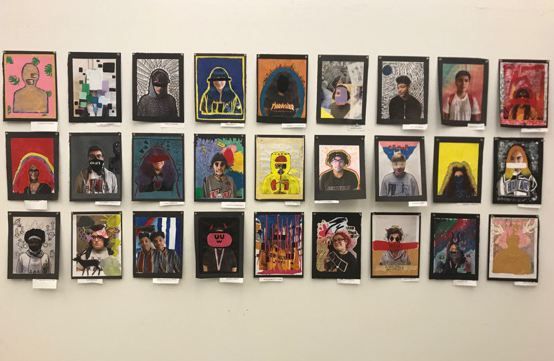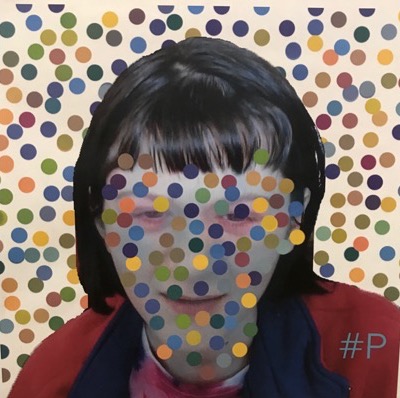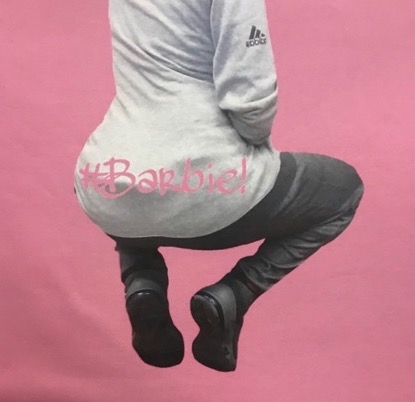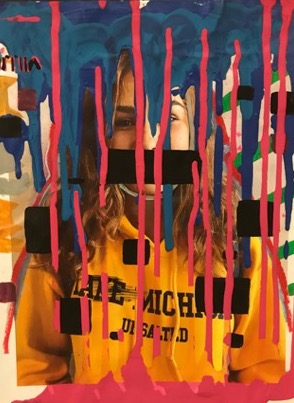Failure of Exact Translation
By Casey Murtaugh, Jenny Gran, Jesse Wyss, Miriam Dolnick
This project involved students in 4 visual arts classes and multiple grade levels in the Senn Arts magnet program: 9th grade students in Digital Imaging & Art I; 10th grade students in Multimedia I; and 11th grade students in Multimedia II. Our community also included four visual art teachers, the Senn High School student body, and the MCA Artist Guides.
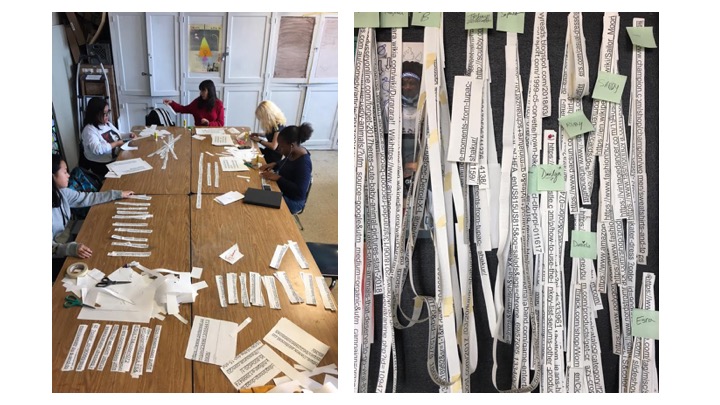
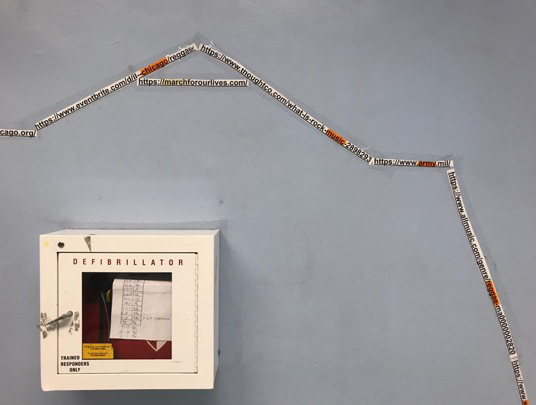
The focus of this project was an investigation of the translation process between the physical and virtual world.
Objectives
- Students will create a profile image of themselves in response to the question: What do you share and withhold in both physical and virtual spaces?
- Students will conduct online research to serve as the material for a collaborative installation in their school hallways.
- Students will create a conceptual and visual response to the prompt: What does it look like when virtual space is translated into the physical world?
- Students will offer and receive critical feedback during informal and formal critiques.
Guiding Questions
- What does it look like when virtual space is translated into the physical world and vice versa?
- How do we decide what to share or withhold?
- How do we as artists make choices in the artmaking process?
- What does it mean to trust?
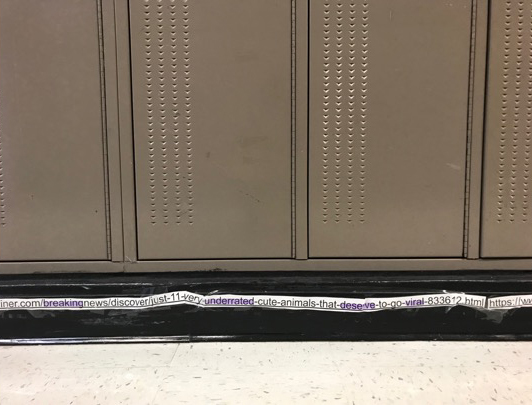
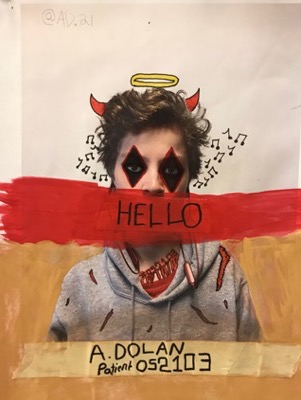
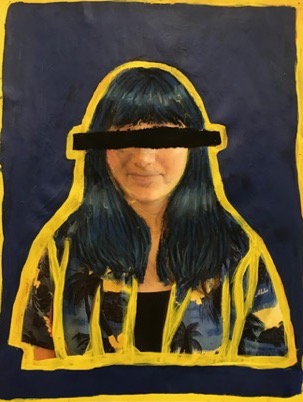
Project Overview
We worked on the project every day over the course of about 4 weeks. In the beginning, students viewed the I Was Raised on the Internet exhibition at the MCA. We analyzed the work of artists exploring the question of translation between the digital and physical world and how people determine what to share and withhold about themselves within these different spaces. Upon returning to school, we presented the idea of using Instagram as a communal platform for documenting and sharing the process of students making work in response to these questions. Each class developed a hashtag for their group, and each individual student created a user profile image to use for their own identification. Based on the artist examples in the exhibition, we asked students to explore the question, “What do you share and what do you withhold?” as a starting place for creating this profile image. Students took photographs of their faces and worked into them, digitally or with mixed media, and then shared these images on the Failure of Exact Instagram account we created for the project. The range of user profiles reflected the play between openness and anonymity that we saw in the work in the exhibition. The goal of this beginning activity was to scaffold a sense of play and experimentation in making work while setting the tone for collaboration, sharing, and responding to one another.
In the next phase of the project, students conducted online research of anything they wanted for half an hour. The only caveat was that they must cut and paste each URL from every page they visited into a separate document. Students then printed these documents, physically cut out the URLS, and taped the paper strips together. Students highlighted words that jumped out at them, and each class began taping their URLs onto the walls in the hallway with a vague goal of connecting all of the art classrooms. As the work progressed, students began responding visually to the URL strips, connecting their own URLS to continue the installations. The URLs became intertwined, evolved into images, and started to venture down the stairs. Installing the text from students’ private, virtual worlds and making it physical and public began to engage the school community. Students outside of these classes started to wonder what this installation was about, and more specifically where these students had been.
After reflecting on these experiences of moving back and forth between the virtual and physical world, students furthered their investigation of the shared and hidden aspects of their online and physical personas by creating a variety of independently driven works. Students and teachers collaboratively developed open-ended prompts, which students could respond to in their own unique way:
- What does it look like when virtual space is translated into the physical world?
- How do we as artists make choices in the artmaking process?
- What does it mean to trust?
Student voice was at the forefront as they explored their unique experiences using materials of their choice. Students worked in a range of media including painting, drawing, video, sculpture, installation, photography, and collage. These works provided students the opportunity to explore the questions we considered as a community through a more personal lens. Some students created very literal responses, while others developed deeper and much more conceptual investigations. Responses varied between the grade levels, but their artistic skill and experience did not hinder their ability to engage in a conversation with each other through investigating, making, and sharing around the ideas explored in response to the I Was Raised on the Internet exhibition.
Throughout this project, students shared ideas and felt connected to their classmates, as well as the community outside of the classroom and the school. Students monitored their progress collaboratively, through reflection questions, self-assessments, informal discussions, and formal critiques. Students were often heard having conversations about what we choose to reveal and conceal, which sparked thought-provoking, unplanned conversations that have continued to fuel students’ artistic investigations. As the year progressed, students realized how individual interactions affect a larger community of teenagers and connected their personal investigations to more universal themes. For example, one student focused on feedback and anonymity in online communities, one student explored the failure of visual translations between physical and virtual representations, and another student examined body image and gender roles.
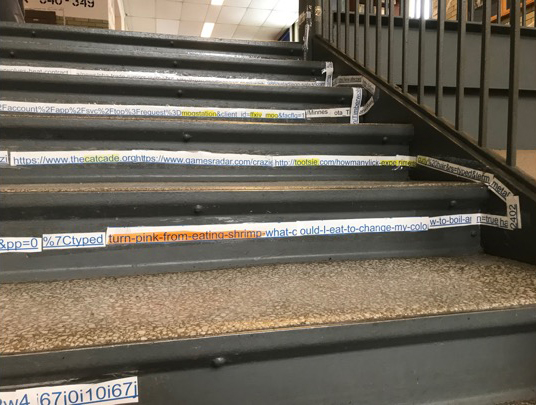


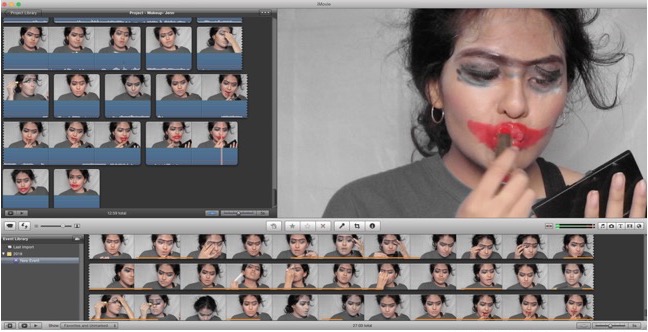
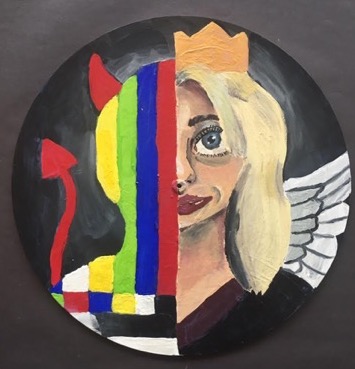
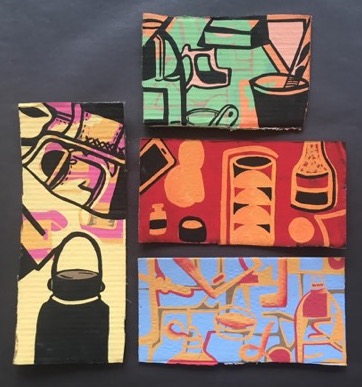
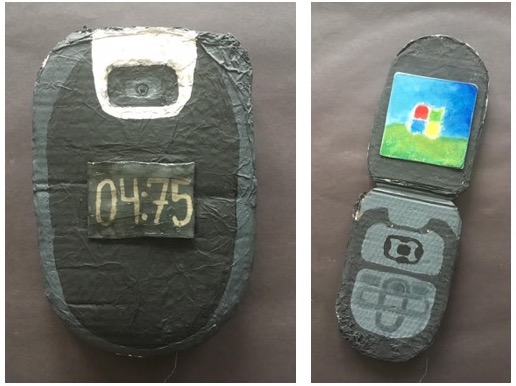
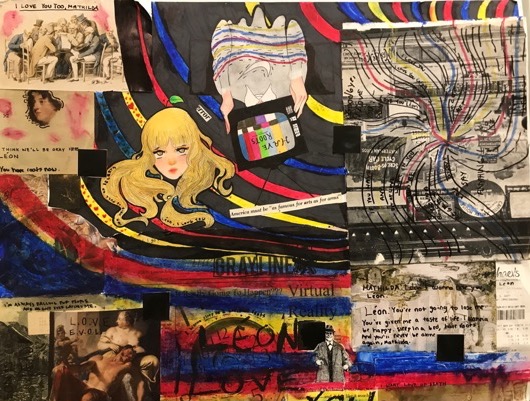
MCA Connections
The field trip to the MCA was the jumping off point for the project. Students experienced the I Was Raised on The Internet exhibition with MCA artist guides and took photographs of artwork that stood out to them. We derived our guiding questions and objectives based on our experiences with the exhibition, and we referenced artworks from the exhibition throughout the duration of the project. We drew the most inspiration from the specific works of Evan Roth, Laura Owens, Bogosi Sekhukhuni, Amalia Ulman, and Oliver Laric.

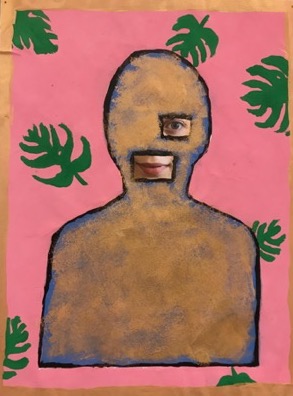
References + Resources
- Cell phones
- Projector (way to show images and project Instagram)
- Google Classroom (or paper & pencil)
- Color Printer
- Adobe Photoshop (or other photo editing software)
- I Was Raised on the Internet
- failureofexact, Instagram feed created for this project
Casey Murtaugh, Jenny Gran, Jesse Wyss, Miriam Dolnick
Senn High School
About Casey Murtaugh
Casey Murtaugh is an artist and educator living and working in Chicago. She received a Master of Arts in Teaching from the School of the Art Institute of Chicago in 2013, a Master of Arts in Interdisciplinary Arts from Columbia College in 2006 and a Bachelor of Fine Arts from Illinois State University in 2002. Concealing and revealing are the two guiding forces behind her artmaking practice. Her work has been shown in galleries and festivals throughout the city of Chicago. Casey currently teaches Art 1 classes as well as Multimedia courses within Senn Arts, a selective enrollment program, at Nicholas Senn High School.
About Jenny Gran
Jenny Gran graduated from the University of California at Santa Barbara with a BA in Art Studio with a focus in sculpture and printmaking. Post college, she moved to Los Angeles to work as a model maker for the film industry. After moving back to her hometown of Chicago, she spent the next few years working as a graphic / web designer before enrolling in Columbia College Chicago to earn her Master of Arts in Teaching in Interdisciplinary Art Education. She loves experimenting with different materials in her studio—she has been working in encaustic painting and plaster for the last five years. She is currently thinking about the ideas of encroachment and transparency. She is going into her 15th year of teaching in CPS and her 4th year at Senn High School where she teaches Art 1, Honors Digital Imaging, & AP 2D-Design.
About Jesse Wyss
Jesse Wyss is an artist and educator, living and working in Chicago, IL. She received her Bachelor of Fine Arts from the School of the Art Institute of Chicago in 1998 and a Master of Art in Art Education from Maryland Institute College of Art in 2007. Her artwork explores the creation and depiction of personal movement, landscape, and interior space, and has been included in group shows in Chicago, Baltimore, Boston, Salt Lake City and Florence, Italy. Ms. Wyss has been a part of the Chicago Public Schools Curriculum Planning Committee and served as a reviewer for the Chicago Guide for Teaching and Learning in the Arts. She is also an active Reader for the College Board for the Advanced Placement Studio Art portfolio. She has been teaching in Chicago Public Schools for sixteen years. She has served as the Fine Arts Department Chair at Senn High School and is a founding faculty member and current Lead Visual Art Teacher for the Senn Arts Magnet Program. She currently teaches Advanced Placement Studio Drawing, Studio I and Multimedia courses within Senn Arts.
Casey, Jenny, Jesse, + Miriam Reflect on the Project
A major success of this project was the class collaboration, which built a connected community across different grade levels. Instagram was a great platform for students to get to know each other as artists outside of their grade level, which typically only happens at art shows. There was so much reflection and thinking throughout the process, which pushed students to go deeper more quickly than usual.
It was challenging for us as teachers to figure things out as we went along, giving students the freedom to guide the project with us not knowing what the end products would look like. The prompt was very conceptual and initially a difficult challenge for younger students, especially freshmen, who did not always know what to do with their freedom in the project. While the freshmen ultimately did an excellent job developing conceptual ideas in response to the prompt, many translated the prompt and brainstorm in very literal ways (this is my virtual world, this is my physical world).
For many students, the artwork became more about the idea and less about what the piece looked like, as they had trouble focusing on both at the same time. This project revealed how students navigate and experience their physical and virtual worlds daily. The flip-flopping back and forth among these worlds is so deeply embedded in their lives that they don’t necessarily think too much about what it feels or looks like. It was interesting to watch them reflect on these concepts and come up with ways to visually represent their experiences.

